Process 1 : In the circuit the switch S is closed at and the capacitor is fully charged to voltage v0 (i.e., charging continues for time T >> RC). In the process some dissipation (ED) occurs across the resistance R. The amount of energy finally stored in the fully charged capacitor is EC.
Process 2 : In a different process the voltage is first set to v03 maintained for a charging time T >> RC. Then the voltage is raised to 2V03 without discharging the capacitor and again maintained for a time T >> RC. The process is repeated one more time by raising the voltage to v0 and the capacitor is charged to the same final voltage v0 as in process 1. These two processes are depicted in Figure 2.
In Process 2, total energy dissipated across the resistance ED is :
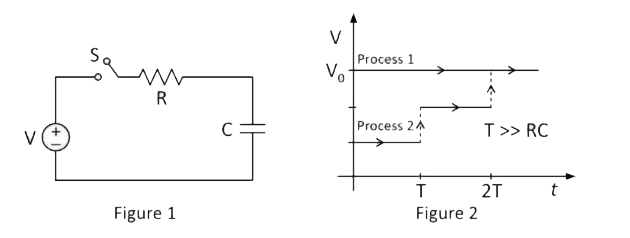
EC=12ED
EC=2ED
EC=ED
EC=EDln2
The correct Answer is:C
Energy supplied by cell =V0(CV0)=CV20 , Energy stored in capacitor (Ec)=12CV20
∴ Energy dissipited across resistor (ED)=CV20−12CV20=12CV20∴Ec=ED
Topper's Solved these Questions
- BOOK - VMC MODULES ENGLISHCHAPTER - CAPACITORSEXERCISE - JEE Advance ( Archive ) LEVEL 311videos
CAPACITORS
- BOOK - VMC MODULES ENGLISHCHAPTER - CAPACITORSEXERCISE - JEE Advance ( Archive ) LEVEL 321videos
CAPACITORS
- BOOK - VMC MODULES ENGLISHCHAPTER - CAPACITORSEXERCISE - JEE Advance ( Archive ) LEVEL 291videos
CAPACITORS
- BOOK - VMC MODULES ENGLISHCHAPTER - BASIC MATHEMATICS & VECTORSEXERCISE - Impeccable50videos
BASIC MATHEMATICS & VECTORS
- BOOK - VMC MODULES ENGLISHCHAPTER - CURRENT ELECTRICITYEXERCISE - IN-CHAPTER EXERCISE-F10videos
CURRENT ELECTRICITY
Similar Questions
In the circuit shown in fig, if the switch S is closed at t=0 , the capacitor charges with a time constant
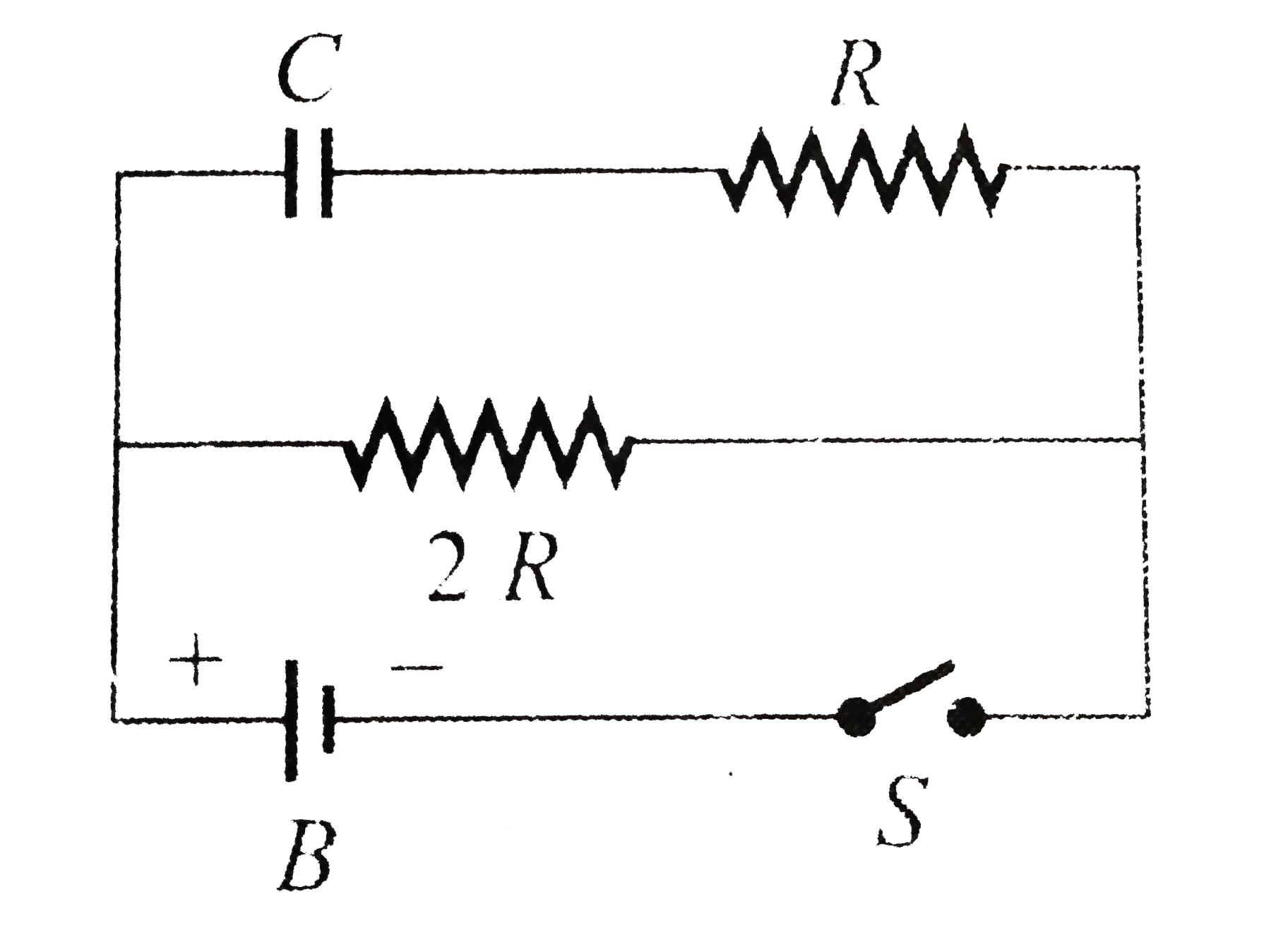 View Solution
View SolutionIn the circuit shown, the capacitor C1 is initially charged with charge q0. The switch S is closed at time t = 0 . The charge on C2 after time t is
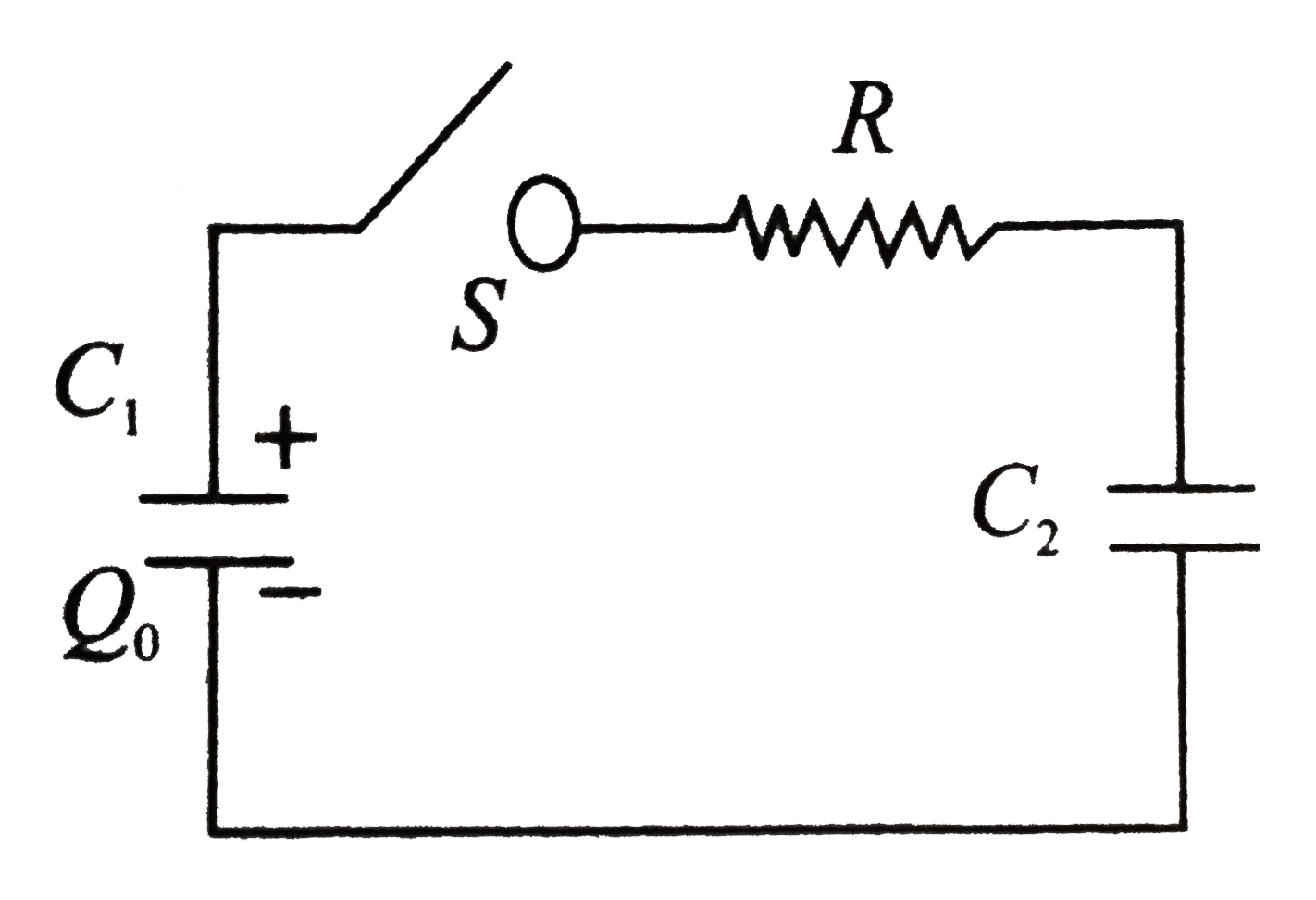 View Solution
View SolutionAn uncharged capacitor is fully charged with a battery . The ratio of energy stored in the capacitor to the work done by the battery in this process is
View Solutionn the circuit shown in the figure, the capacitor C is charged to a potential Vo The heat generated and charge flow, in the circuit to when the switch S is closed, is
 View Solution
View SolutionA 2μF capacitor C1 is charge to a voltage 100 V and a 4μF capacitor C2 is charged to a voltage 50 V. The capacitors are then connected in parallel What is the loss of energy due to parallel connection?
View SolutionA capacitor of 0.75μF is charged to a voltage of 16 V. What is the magnitude of the charge on each plate of the capacitor ?
View SolutionThe switch S in the circuit diagram is closed at t = 0. The charge on capacitors at any time is
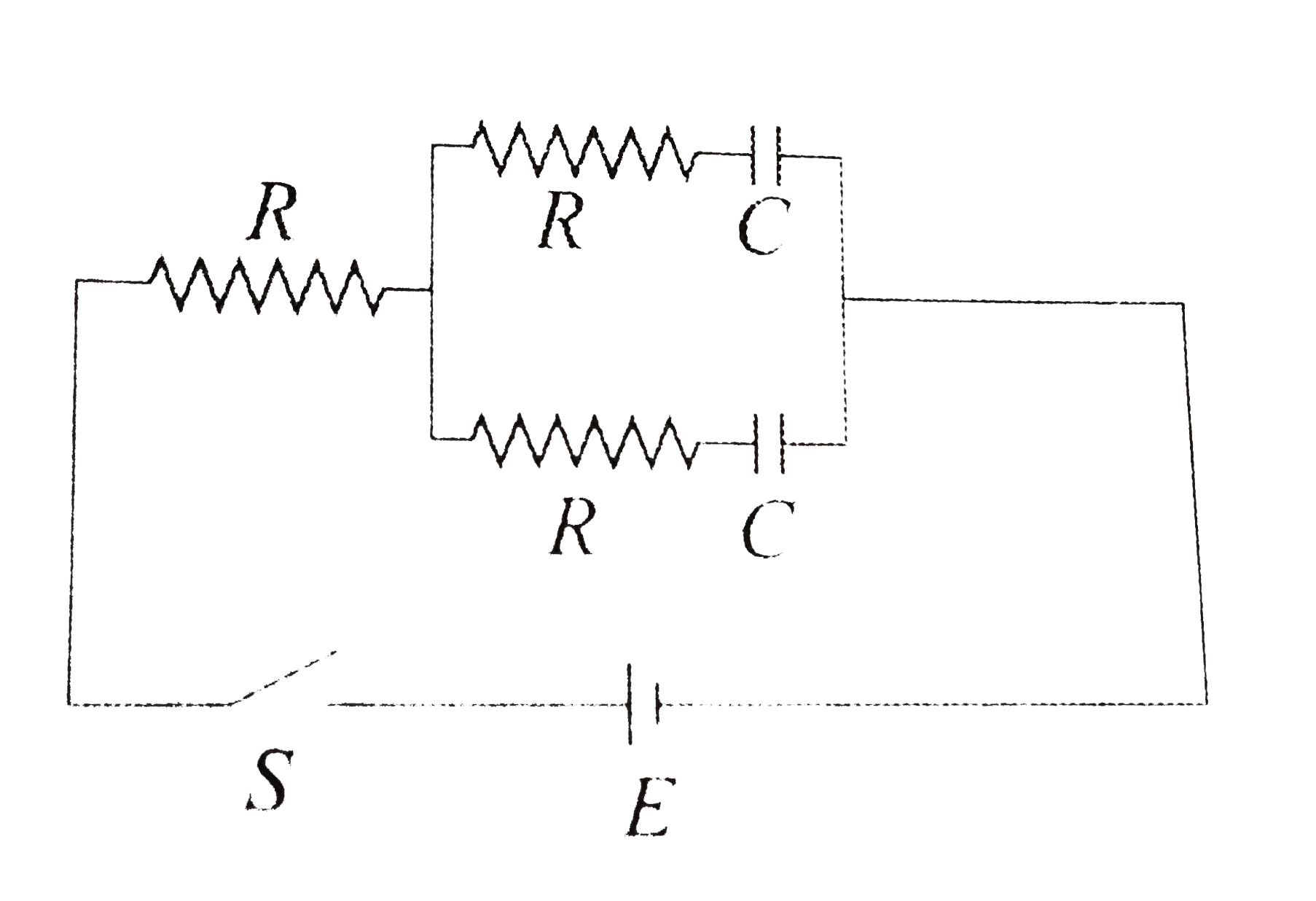 View Solution
View SolutionIn the circuit shown in figure-3.240 switch S is closed at time t=0. find the current through different wires and charge stored on the capacitor at any time t.
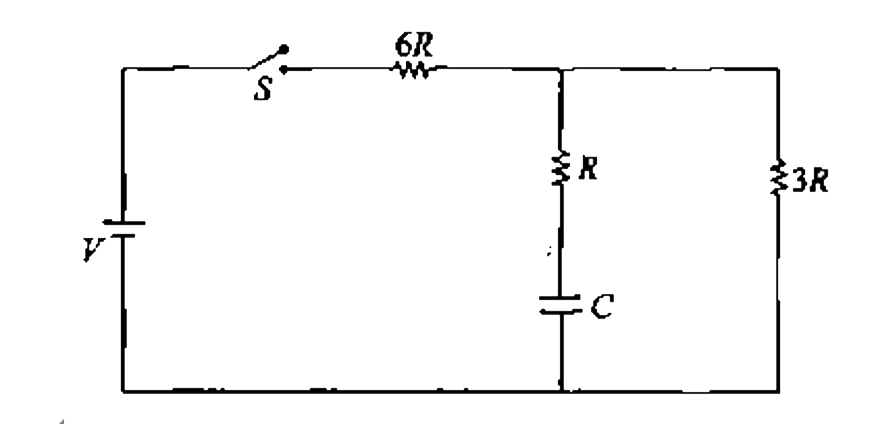 View Solution
View SolutionIn the circuit shown in figure, the capacitor is charged with a cell of 5V.If the switch is closed at t=0, then at t=12s, charge on the capacitor is
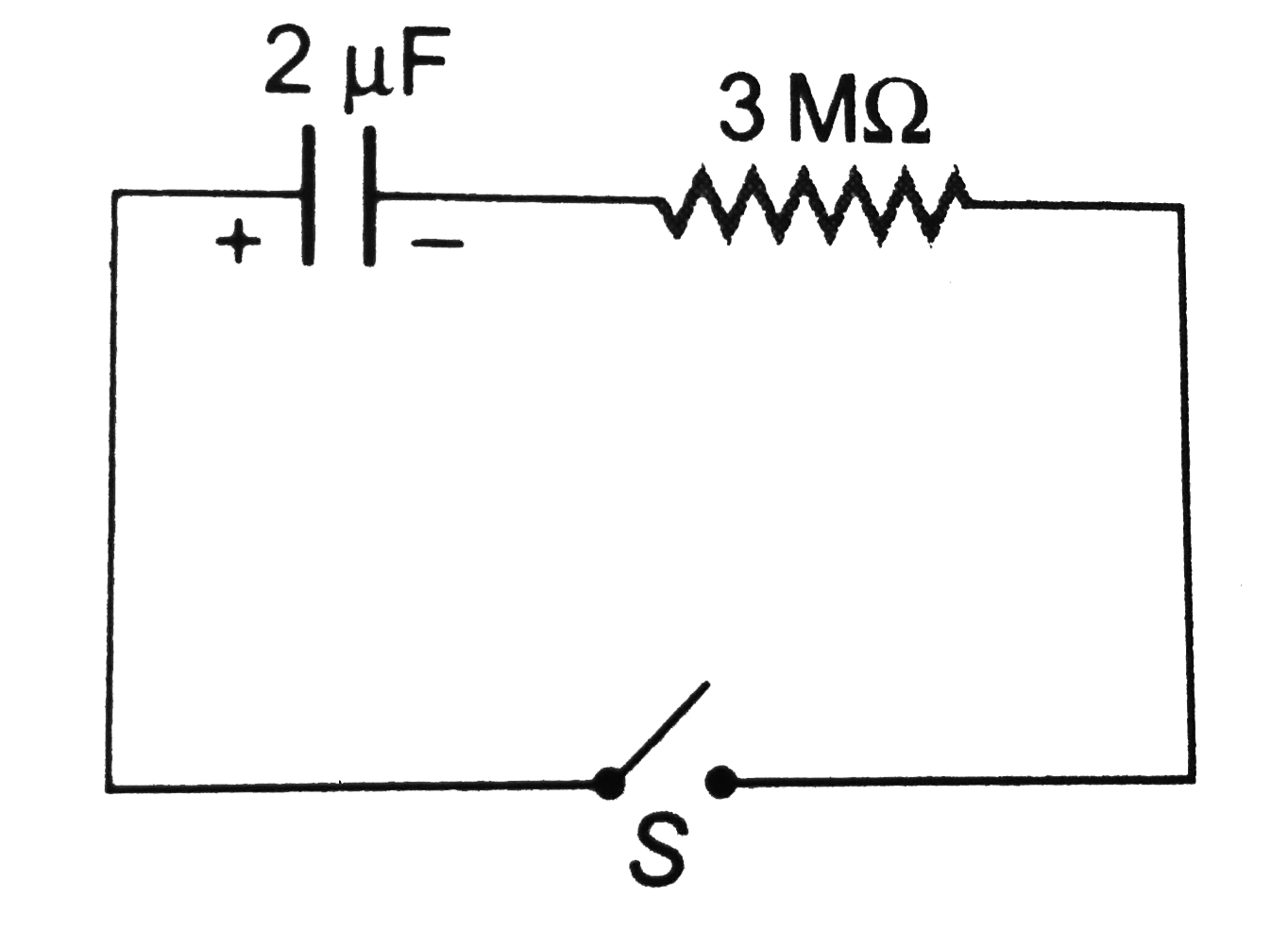 View Solution
View SolutionThe switch S is closed at t=0 . the capacitor C is uncharged but C0 has a charge Q0=2μC at t=0. If =100Ommega , C=2μF , C0=2μF,E=4V. Calculate i(t) in the circuit.
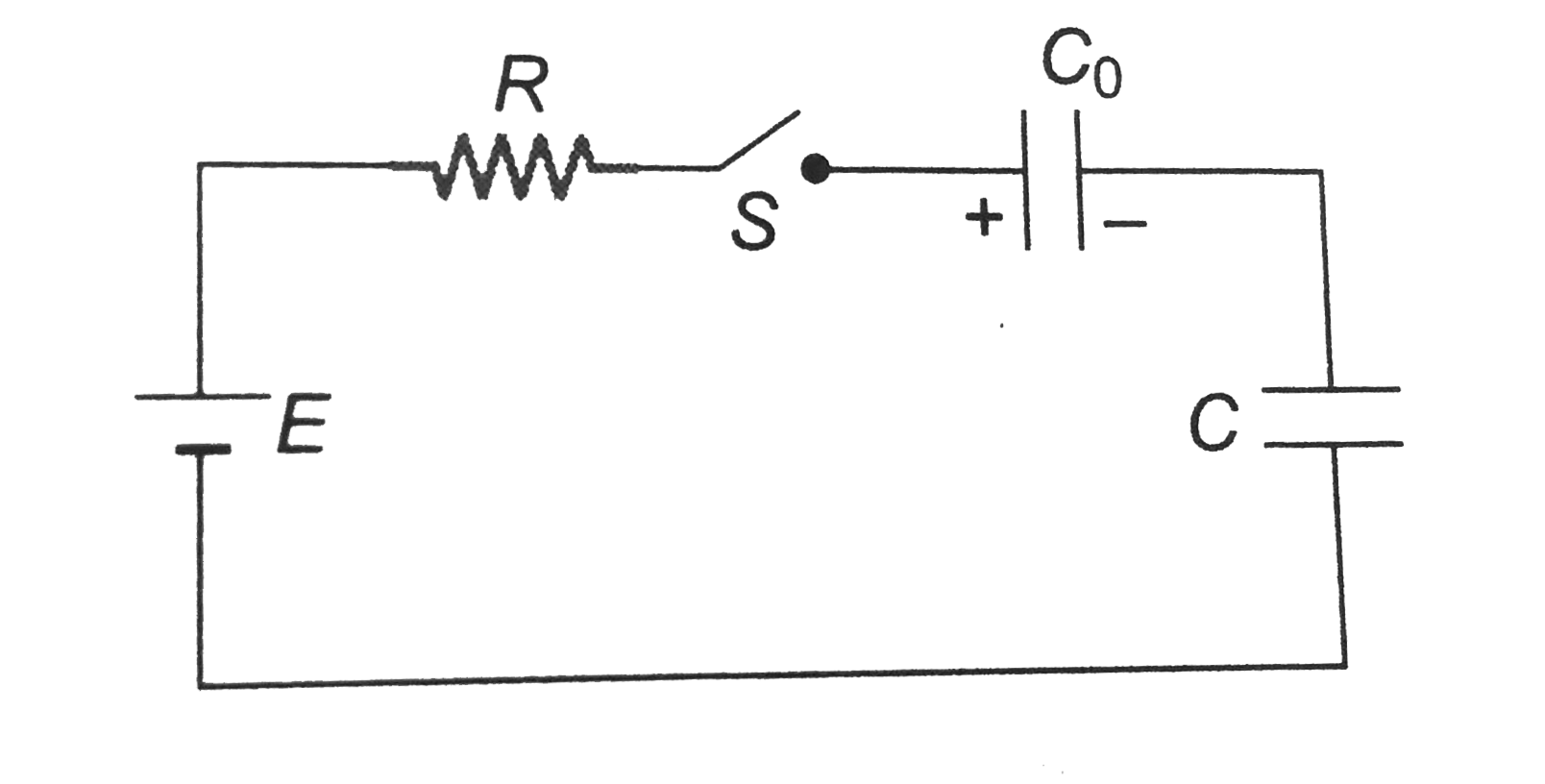 View Solution
View Solution

